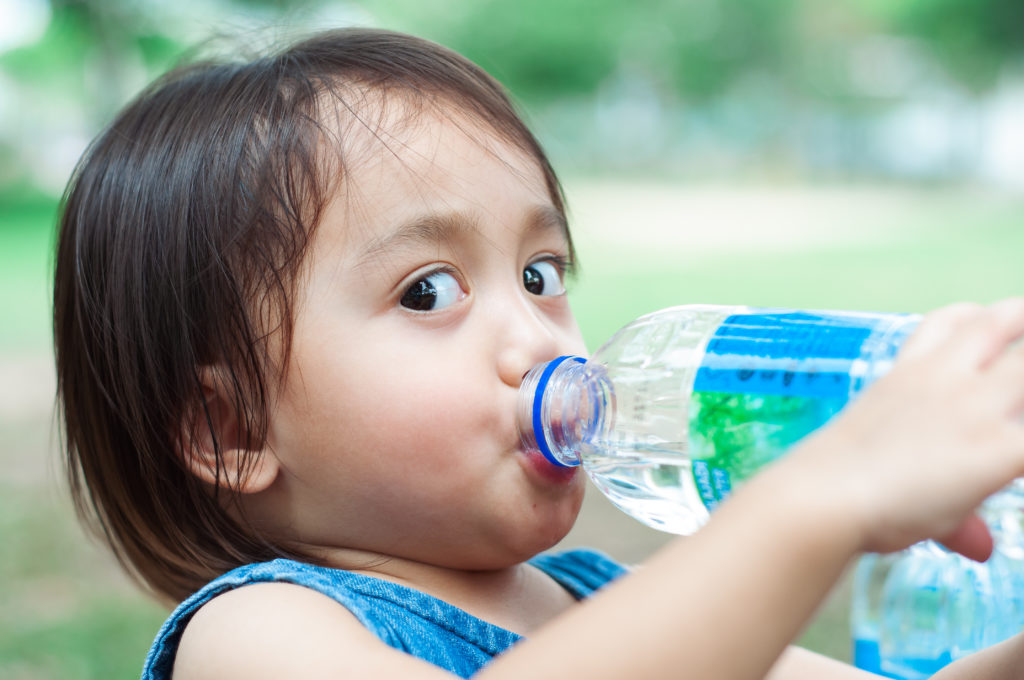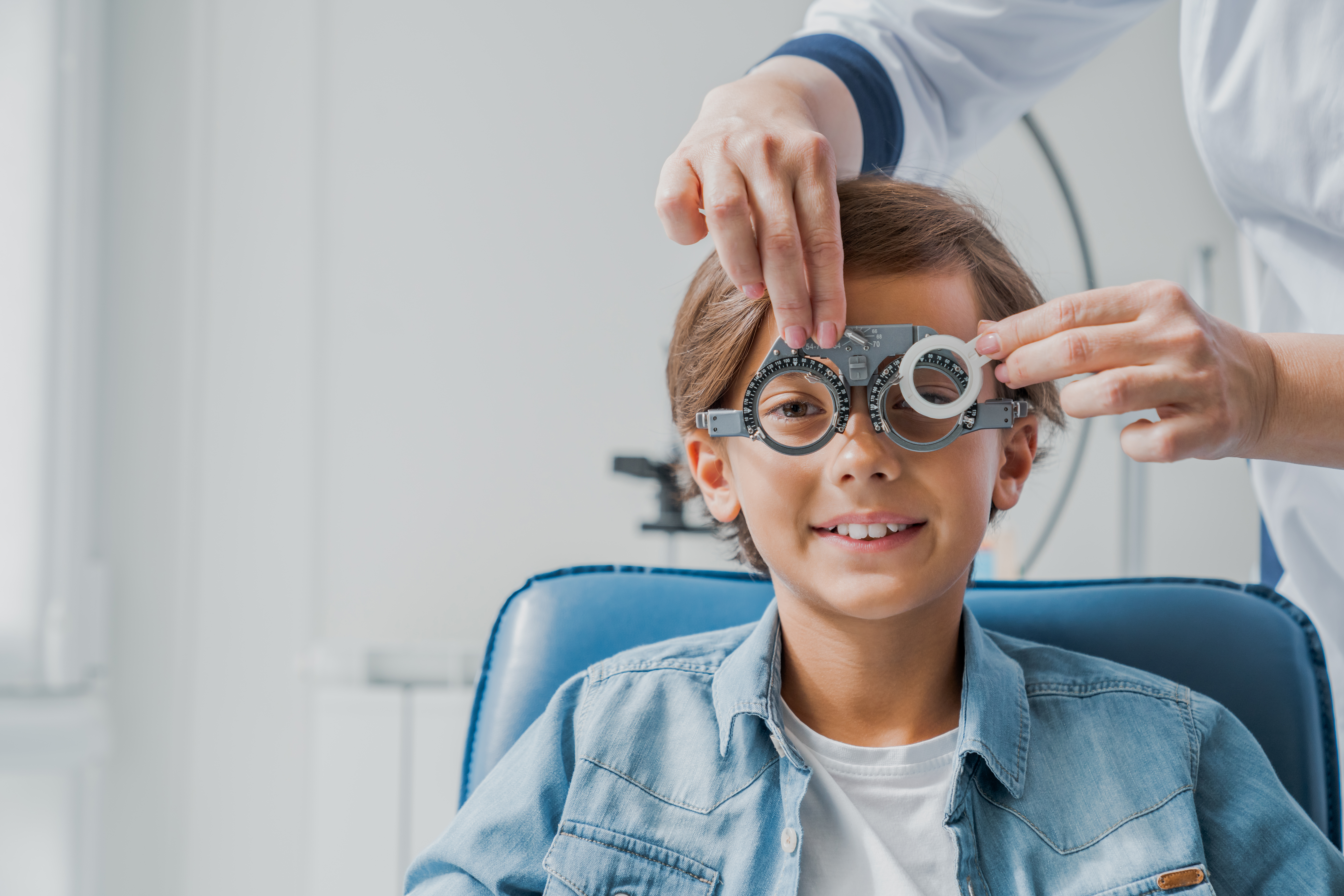
Young children are a high-risk group for heat-related illnesses all year round, but especially during the summer months.
Now that summer has officially started, there is no doubt your children want to spend their time away from school outside playing, participating in their favorite sports, biking, hiking, and swimming. Spending time outdoors is healthy for a growing child, but with increased time in the sun comes an increased risk of heat illnesses such as heat exhaustion and heat stroke. Taking precautions to protect your kids from heat illnesses and keeping an eye out for symptoms helps ensure that they get the most out of their time off.
Signs of Heat Exhaustion
Heat exhaustion occurs when your child’s body loses too much water and salt due to excessive sweating. Dehydration and respiratory patterns can also contribute to heat exhaustion. It can take as little as 10 to 15 minutes for heat exhaustion to set in, usually associated with a rapid rise in your child’s body temperature.
Heat exhaustion symptoms include the following:
- Rapidly rising body temperature, up to around 106℉
- Rapid, weak pulse
- Cold and/or clammy skin
- Pale skin
- Headache
- Tiredness
- Muscle cramps
- Weakness
- Dizziness
- Abnormal sweating (usually more than typical for the child)
- Lost consciousness
- Nausea
If you suspect your child may be suffering from heat exhaustion, call 911 or take your child to the emergency room if:
- Your child begins vomiting
- Your child’s symptoms worsen despite your intervention
- Your child’s symptoms last for longer than an hour
Treating Mild Heat Exhaustion
Parents may treat their child’s heat exhaustion at home if the symptoms are weaker and caught early. As soon as you notice that your child is displaying the symptoms of mild heat exhaustion, take the following actions:
- Move your child to the nearest cool spot. Air conditioning is preferred, but shade makes for an acceptable substitute.
- Loosen or remove any tight clothing that could restrict breathing and circulation.
- Cover your child’s body in wet, cold washcloths or towels, or give them a cold bath or shower.
- Give your child water to sip. Have them avoid the urge to guzzle, chug, or gulp, as doing so may cause them to vomit.
If symptoms worsen or persist, call 911 or take your child to the emergency room immediately.
Signs of Heat Stroke
Heat stroke is the result of your child’s body emanating more heat than their body is capable of releasing via breathing or sweating. It requires immediate intervention from a medical professional, as brain damage and even death can occur if unaddressed.
Heat stroke symptoms include the following:
- Headache
- Nausea
- Temperature of 103º or more
- Confusion
- Dizziness
- Damp, hot, or dry skin
- Reddened skin
- Pounding or rapid pulse
- Seizures
- Lost consciousness
- Disorientation or hallucinations
If you suspect your child may be suffering from heat stroke, call 911 or take your child to the emergency room. Unlike heat exhaustion, heat stroke cannot be managed at home. However, there are ways to make your child comfortable while you wait for the ambulance to arrive or make your way to the ER.
Comforting Heat Stroke in Children
Even though heat stroke requires medical intervention, parents can still help their children cool down before professional heat stroke treatment begins. Take the following steps to keep them safe and healthy before medical attention arrives:
- Do not allow your child to drink any liquids, not even water, since it can lead to vomiting.
- Move your child to an indoor space with air conditioning. Only move them to the shade if no AC options are nearby.
- Encourage your child to sweat by using electric or hand fans.
- Elevate your child’s feet to encourage circulation.
- Lower your child’s body temperature with cold, wet washcloths or towels, or a cold bath or shower. The neck, armpits, and groin are ideal points to get them cooler, faster.
Preventing Childhood Heat Stroke and Heat Exhaustion
You and your children want to enjoy the freedom that comes with the summer months, and taking some basic precautions help prevent the onset of heat exhaustion and heat stroke. We recommend making the following habits standard:
- Drink water regularly. Electrolyte drinks are also permissible if your child will be sweating a lot.
- Wear sun hats.
- Wear loose clothing in light colors.
- Apply sunscreen of SPF 15 or more a half hour before going outside, and reapply every few hours. Reapply more frequently if sweating heavily or swimming.
- Avoid sugar and caffeine consumption while outdoors to prevent dehydration.
- Stay in the shade whenever possible.
- Do not leave children alone in cars or other hot spaces.
- Avoid sitting on metal chairs or benches whenever possible.
- Spend as much time indoors with air conditioning as possible. The riskiest times of day for heat illness are between 1 and 5 p.m.
We recommend that parents take these heat exhaustion and heat stroke prevention steps along with their children. Kids reflect their parents’ own actions, and they’ll be more likely to protect themselves against heat illnesses if they watch you doing the same.
Your Heat Sickness Emergency Center
If your child experiences heat stroke or heat exhaustion with symptoms too severe to address at home, or if the symptoms worsen despite your interventions, dial 911 or bring the patient to us at 10133 Interstate 10 East, Baytown, TX 77521.
We recommend keeping our address handy when you’re out and about in the area this summer so you know exactly where to go if your child starts feeling ill from the heat. Many of us are parents ourselves; we understand the need to always be prepared for any summertime heat sickness.

